Close Encounters Of The Scale-Y Kind
First published in Sanctuary Asia,
Vol. 42
No. 12,
December 2022
By Trishala Ashok
When I think back to the day I had a close encounter with the Indian cobra Naja naja, this story pretty much writes itself.
Not A Walk In The Park
It all goes back to the good old mask-free days when we could meet like-minded strangers, take long walks in the field, and bond over our interest in wildlife. A group of nature enthusiasts and I signed up for a walk in Chennai with the Irulas, the largest Tamil-speaking tribe of Tamil Nadu. They are known for their indigenous knowledge of capturing wild animals. From invasive rats in paddy fields and fleet-footed monitor lizards, to venomous snakes and scorpions, these indigenous hunters don’t fear any creature!
Reading the compelling story of how these hunter-tribes transitioned to snake conservation, and their legendary field tales of their skilled tracking of the “big four” snakes were exactly the motivation I needed to sign up for this walk on a hot Chennai summer morning.
The walk starts early in the morning and usually takes place on the outskirts of Chennai, near farmlands. Agricultural fields are hotspots for reptilian and amphibian activity, so for anyone cutting their teeth on herping, this was the place to be. But tracking snakes in the scorching heat wasn’t exactly a walk in the park. After looking for reptiles for more than four hours, we decided to rest under the shade of what seemed to be the only green tree in the vast agricultural landscape. We snacked on some warm fruit juice and biscuits. Our eyes constantly scanned the branches for the shiny scales of a bronze-backed tree snake, or the glowing yellow eyes of a green vine snake. There was a lot of chitter-chatter from birds perched in the trees, but birding had to take a back seat that day. When we had no luck spotting tree snakes, our attention turned to an army of ants on the ground, crawling in a straight line, going about their busy day.
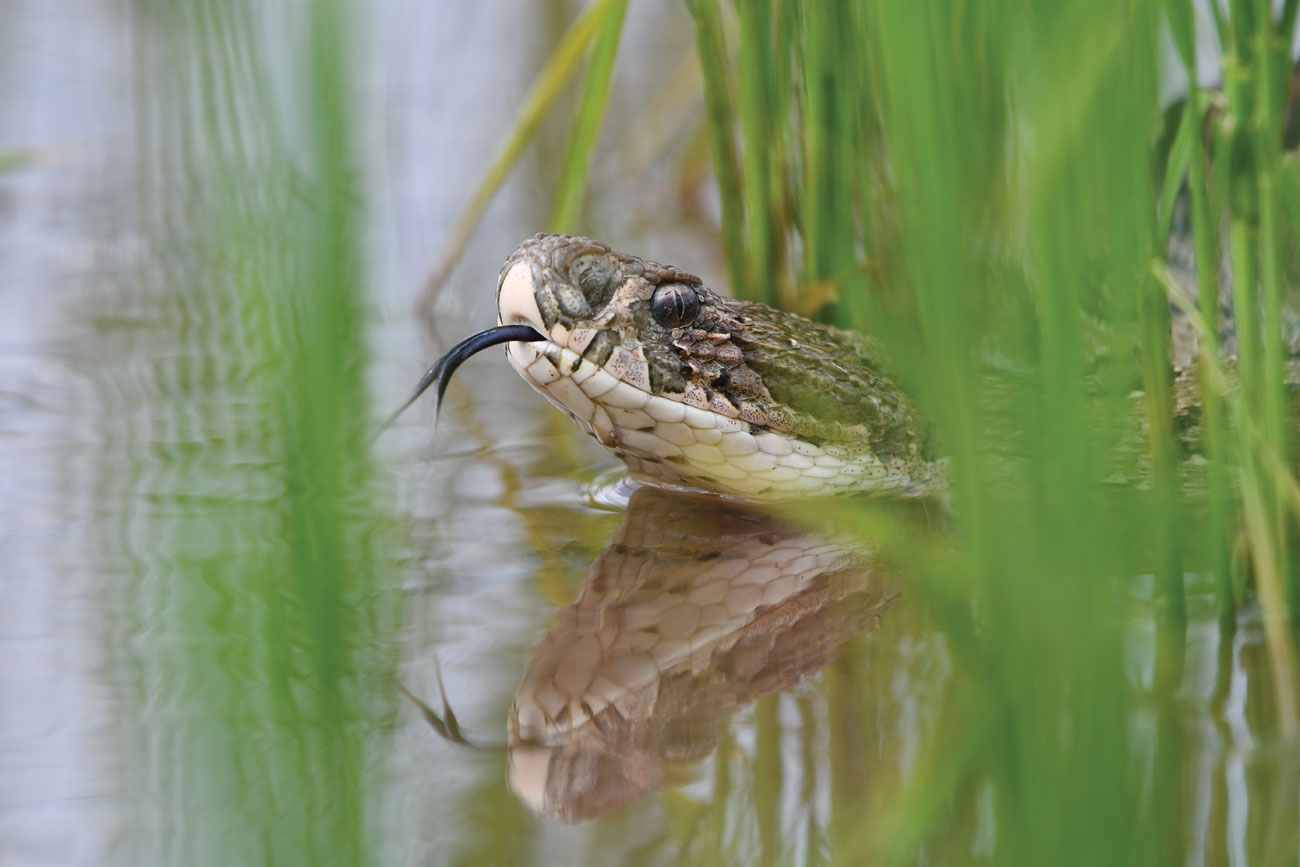
The genus Daboia means “the lurker” or “the hidden” in Hindi from which the nomenclature for Daboia russelii has emerged. On account of their gregarious nature, and preference for peri-urban as well as agricultural areas, this genera is responsible for causing the most snakebite incidents, leading to fatality, among all venomous snakes. Photo: Gnaneshwar C.H.
De-Escalating The Fear
Kali, the son of the famous Irula snake catcher Chockalingam, walked towards us holding a snake. As he walked closer, we recognised the brown colubrid snake in his hands – the Indian rat snake Ptyas mucosa. Rat snakes act as nature’s pest controllers. Their presence helps control the population of agricultural pests such as rodents. This behaviour has rightly earned them their title of ‘farmer’s friend’. Excited to see our first reptile of the day, we bounced up to meet and greet the lovely specimen. I watched Kali calmly handle the snake by supporting its weight with his hands and allowing it to move with absolute ease. If the snake moved too forward, he would gently place his hand below its neck and loop it back. This ‘loop-the-loop’ synchrony calmed the snake down. A snake’s usual defence mechanism is to inflate its body when it feels threatened. I watched it deflate slowly, and get comfortable with every loop. After we had all had our share of admiring the 150 cm. long snake, it was time to let it go. Some of the participants were initially apprehensive to stand close to the snake but after encouragement by others, they were thrilled by their first experience of interacting closely with a non-venomous reptile. Watching their fear turn into excitement with such a simple encounter made me think about how a positive approach like this can help turn things around for snake conservation in India.
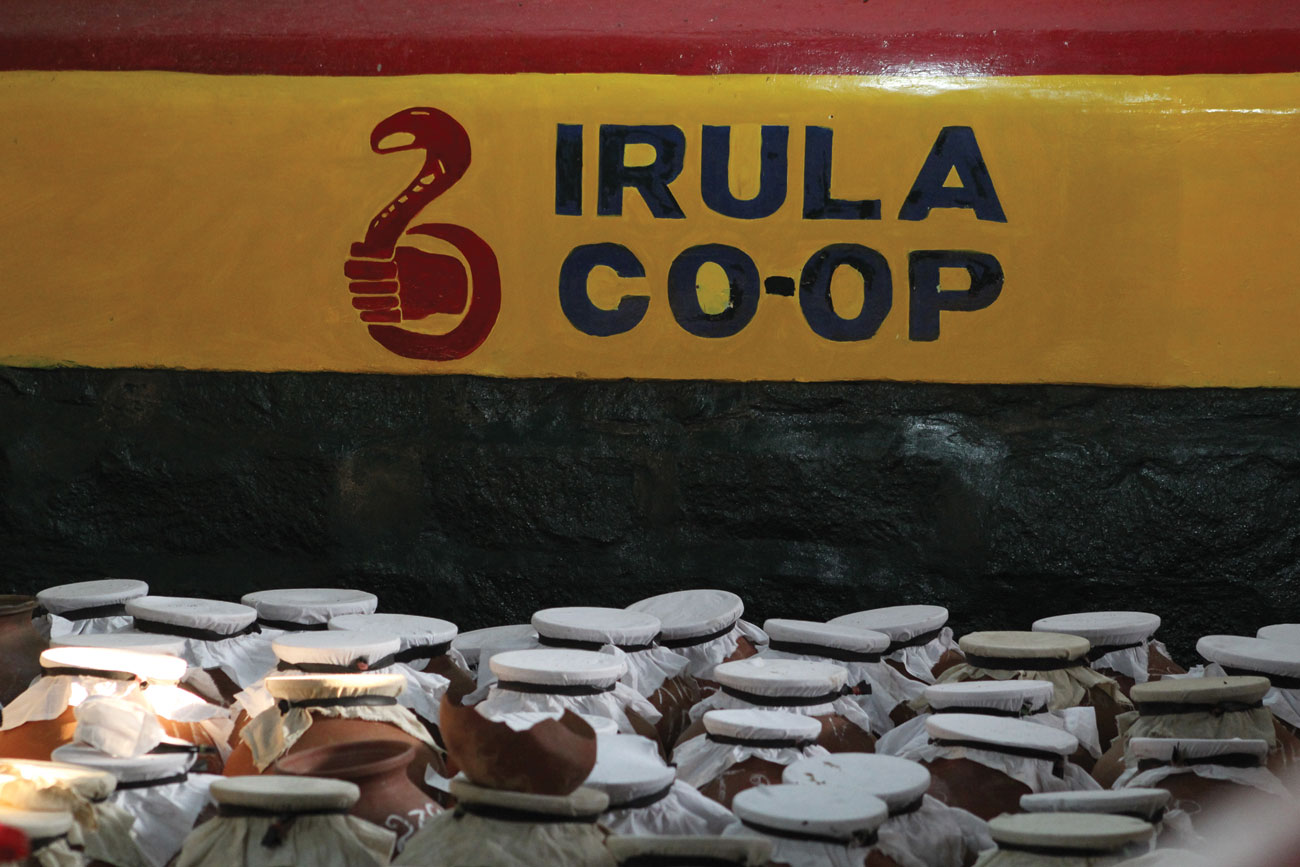
The Irula Co-operative Venom Centre aims to replace this lost income with the help of a valuable resource – snake venom, in a sustainable manner. Photo: Elliot Pelling.
Herpetologist Ajay Kartik, who earlier worked with the Madras Crocodile Bank Trust (MCBT) and the Irulas for over a decade, believes that a walk with the tribe is a good way to learn about snakes and their ecology. He shares, “Since these walks are usually conducted on the outskirts of Chennai, the experience gives city folk a good idea about snakes in peri-urban areas, which have been proven to be crucial habitats. Participants of the walk also get to experience what an average morning for an Irula is like.” He adds that seeing snakes in the wild is a different experience – “The snakes at MCBT are captive-bred and are used to people when compared to snakes in the wild. Some visitors – especially children – feel a lot more differently towards snakes after watching employees gently handle snakes.”
Before we talk about such interactions and their influence on the minds of serpentine-fear-stricken people, we have to first understand why this knowledge gap about snakes persists.
Snakes are possibly the most misunderstood amongst all wildlife. Most of the fear stems from the stories that have been woven into cultural beliefs. Even modern cinema and television serials tend to portray snakes as ‘vicious’ or ‘dangerous’. Every scene with a snake – always a cobra – is accompanied by ominous music playing in the background. Media reports of snake encounters always begin with frightening headlines, adding fear to the audience’s mind. Moreover, in this era of social media influencers, videos of unethical rescues of venomous snakes or misleading facts often go viral on the Internet. With the country’s rapid increase in population and habitat alterations, encounters with snakes have been on the rise over the last few decades, making snake rescuers busier than ever before. Awareness of ethical rescue protocols still seems to be one of the missing pieces of the puzzle in snake conservation.
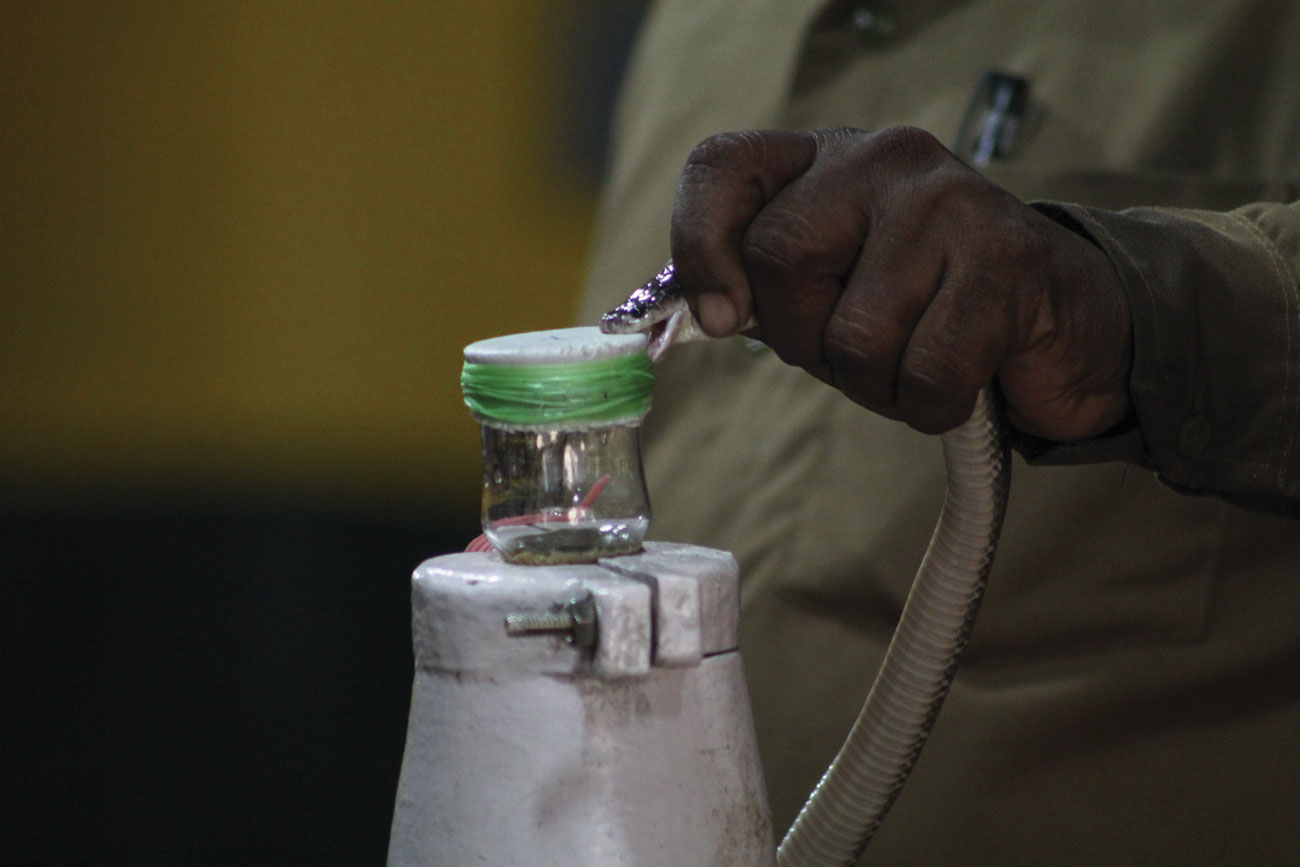
Irulas – a tribal people whose traditional skills included snake-catching – lost a major source of income when snakeskin export was banned in 1976. Photo: Elliot Pelling.
Gowri Shankar, a herpetologist and Director of the Kalinga Centre for Rainforest Ecology (KCRE), believes that if people are interested in rescuing snakes, they should be willing to learn about the scientific management of rescues. He says, “When it comes to fatalities caused to humans on account of wildlife conflict in India, snakes are in the top five. Unlike other wild animals such as leopards, tigers and elephants, rescues of snakes take place on a day-to-day basis all over the country. Even though there are a lot of snake rescuers these days, many of them are not aware of the proper techniques when it comes to handling snakes safely, which are crucial in order to avoid accidents during rescues. Years ago, when I got into this field, there was limited information available. I would interact with my seniors and learn from them. These days, there is a lot of information available in books and online, but scientific and ethical rescue methods are still absent.”
Gowri has been working with king cobras – the longest venomous snakes in the world – for around two decades. His recent ground-breaking study identified the four lineages of the king cobra, earlier thought to have been one lineage. His discovery could lead to more effective production of anti-venom to treat king cobra bites across East and Southeast Asia. But evolutionary science is not all this snake conservationist is known for. KCRE has been conducting various workshops in Chennai and Mysore for around 10 years. With their Scientific Training of Reptile Management (STORM) certificate workshop, Gowri has successfully educated over 900 people. He has also worked with forest officials across various states and has managed to educate them on snake rescue, ecology and behaviour.
Most people think snakes want to deliberately attack us. They are unaware that snakes do this for self-defence. My close encounter with a cobra helped me understand this better. Let’s return to the story of my day out with the Irulas.
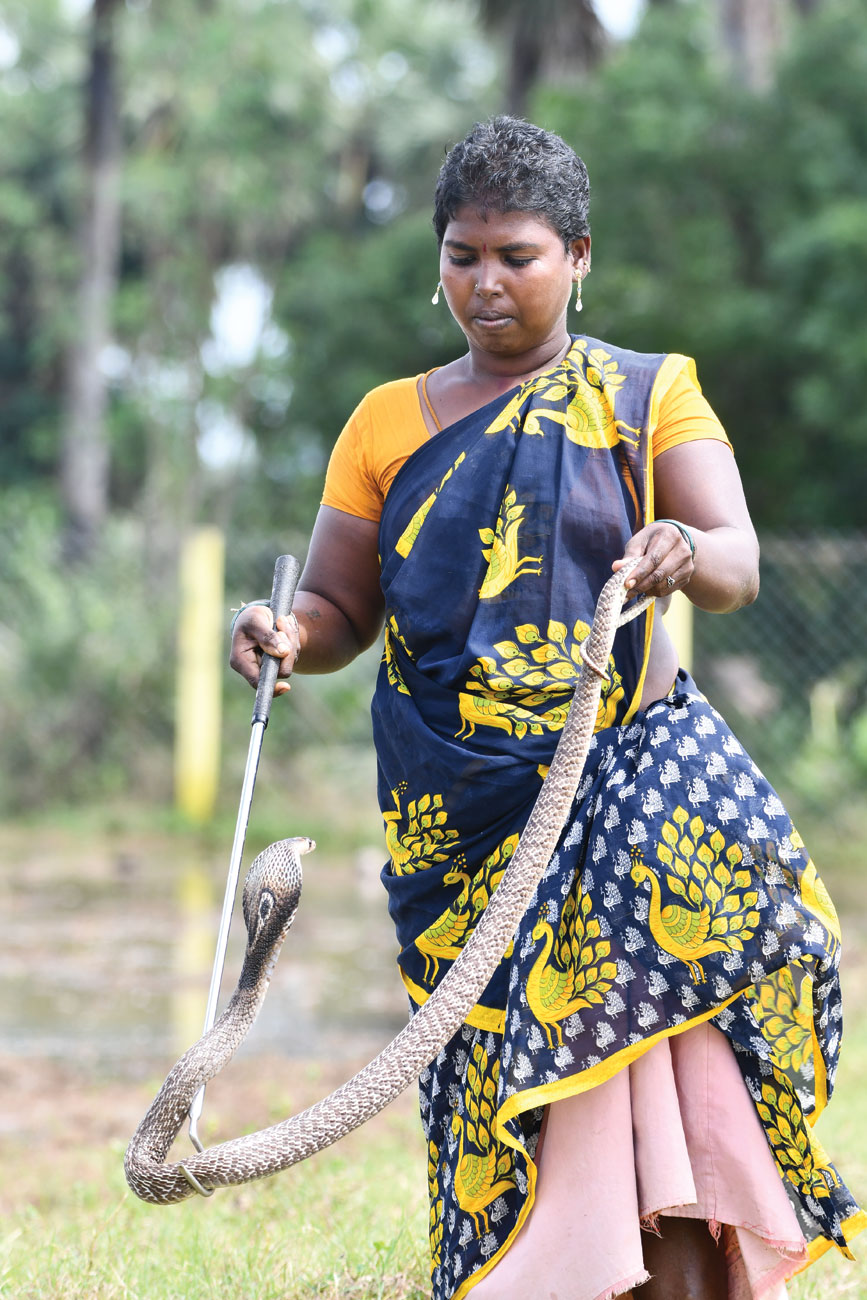
Gently handling the cobra with a snake hook, Alamelu, a member of the Irula tribe, impresses participants on the walk with her snake-handling technique. Photo: Gnaneshwar C.H.
Face To Face With The Indian Cobra
After an uncomfortable break, where we spent our time fidgeting with small twigs in the burning heat, we resumed our quest. The task of looking for snakes on an empty stomach seemed daunting, but the anticipation of finding one was thrilling. We had great luck with some non-venomous snakes such as the green vine snake, another friendly rat snake, and a super-friendly buff striped keelback, but were not as fortunate to encounter the snakes we were all hoping to meet. Like all star-struck herpers, we were determined to see at least one of the famous four.
We were on the verge of giving up, but the hard-working tribesmen continued looking. “Irulas earn their living by catching cobras, vipers and kraits, and handing them over to venom labs. They are out and about looking for the big four snakes almost every morning, and spend most of their day looking for these species,” shares Ajay Kartik.
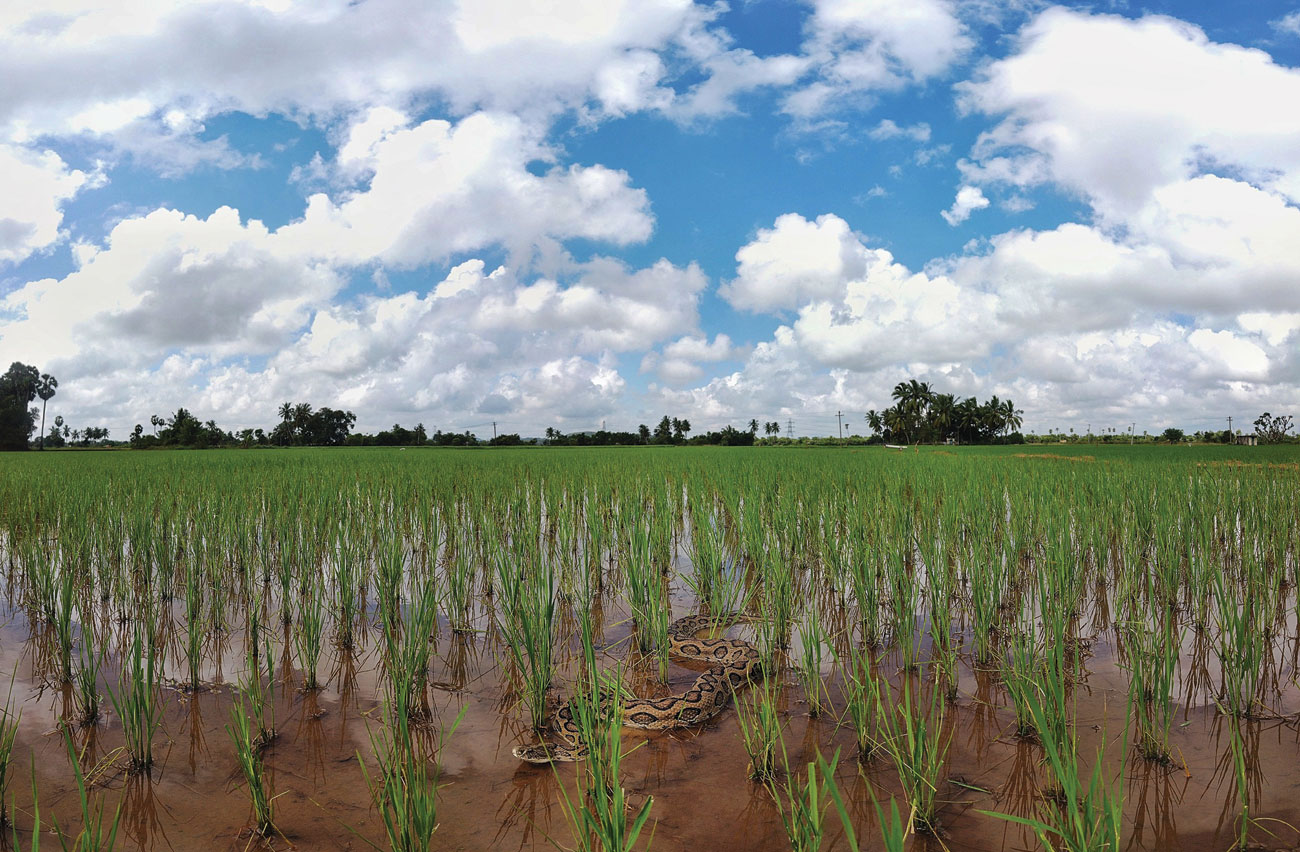
Agricultural fields are hotspots for reptiles such as this Russell’s viper, as well as amphibians. Photo: Gnaneshwar C.H.
Finally, after hours of searching, an Irula came up to us, grinning. From the excitement on his face, we could all tell that he had found one of the big four snakes! He opened the bag to show us. It was a sub-adult cobra.
But something seemed slightly off. The scales were covered with a greyish layer of skin. The snake was about to shed its skin! Snakes shed skin throughout their lives and during this moulting phase, they are extremely agitated, so it is advisable to leave the snake alone and not use it for milking. As the Irulas took the snake out of the bag, we took our cameras and phones out of ours. For me, the most cosmopolitan snake is the cobra. There is something magisterial about them, which makes them more impressive than vipers and kraits. Not only do they have a striking posture, but they also stare into your eyes as if they aren’t intimidated by your size. It was a stunning specimen and words still fail me. For the next few minutes, all one could hear was a symphony of camera clicks.
_C-1300_1670575631.jpg)
Irulas earn their living by catching cobras, vipers and kraits, and handing them over to venom labs. They are out and about looking for the big four snakes almost every morning, and spend most of their day looking for these species. Photo: Arul Venkateshwaran.
After a few minutes of being possessed by the shutterbug, we decided to let the snake go. I stepped back and kneeled down to watch the release. Before I could even focus my camera, the snake was already moving. What happened next was a life-changing experience for a wildlife rookie like me. The snake passed within a hair’s breadth of my shoe, and rapidly disappeared into the thicket. As shocked as I was, I stayed calm, because I knew that was the right thing to do. It was at this moment that I realised how misunderstood snakes are.
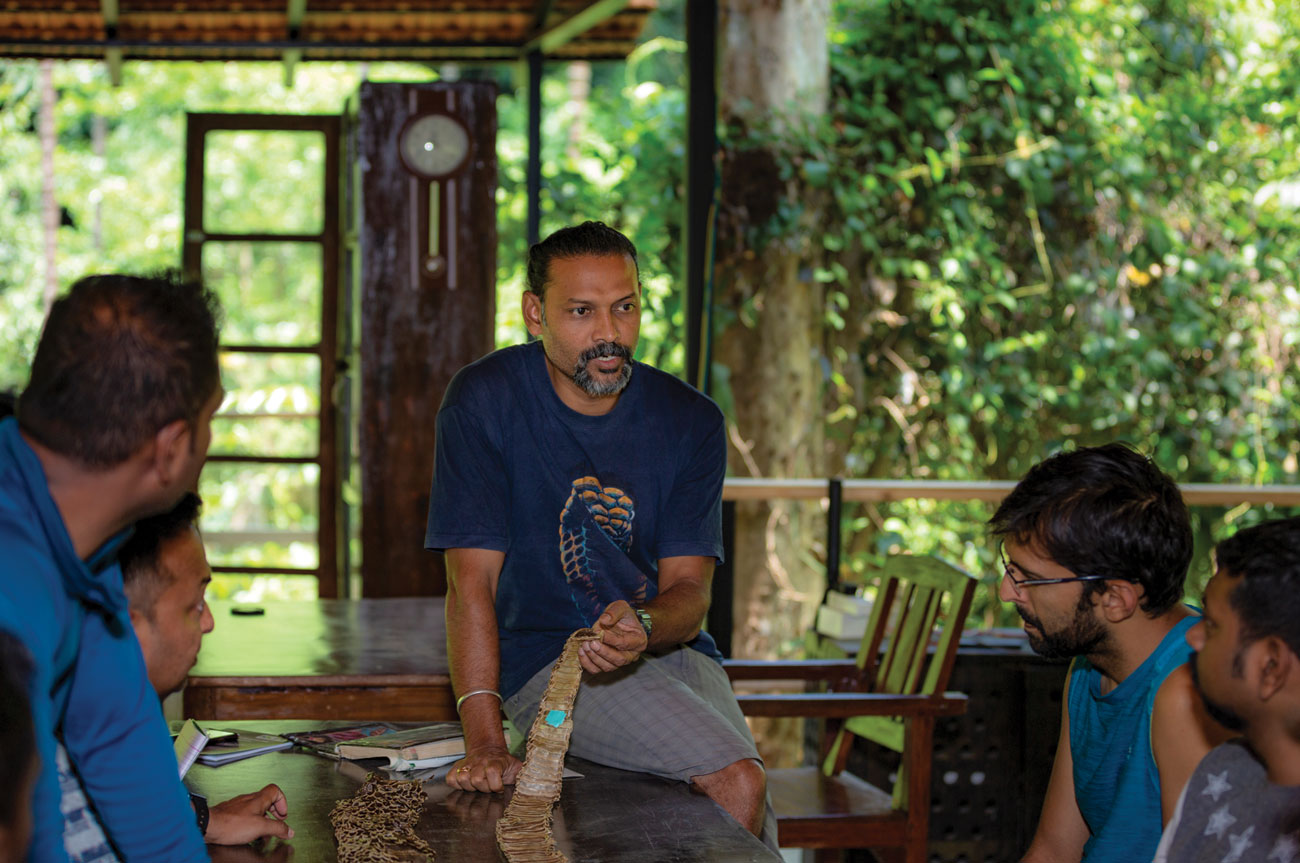
Gowri Shankar addresses participants of the King Cobra Bionomics and Conservation Annual Workshop at the Kalinga Centre for Rainforest Ecology (KCRE). Photo: Anuroop Krishnan.
Future Options
With India reporting 50,000 fatalities from snakebites every year, the sustained efforts and the bravery of the Irula community to tackle the country’s snake-bite conundrum is the need of the hour. But dealing with venomous snakes can put even a skilled snake whisperer at risk. “The Irula community puts their life on the line by dealing with venomous snakes daily. People believe that they are immune to snake bites, but this is a misconception. The Irulas have been working with snakes for generations, so they are aware of the consequences and seek timely emergency treatment if any such incident occurs,” says Ajay Kartik.
What does the future of snake conservation look like? Gowri Shankar believes that more scientists need to convey their research findings with communities by conducting awareness programmes. He says, “That is when science will reach people. This can help us address the knowledge gap and mitigate snake conflict in India. We need to ensure that the right information is shared on the Internet, television and in the media. Concerned authorities should be informed so they can take strict action. It is also important for rescuers to work in tandem with the local Forest Department.” Like all social and environmental issues, awareness is the greatest agent of change.







_C-1300_1670575631.jpg)
